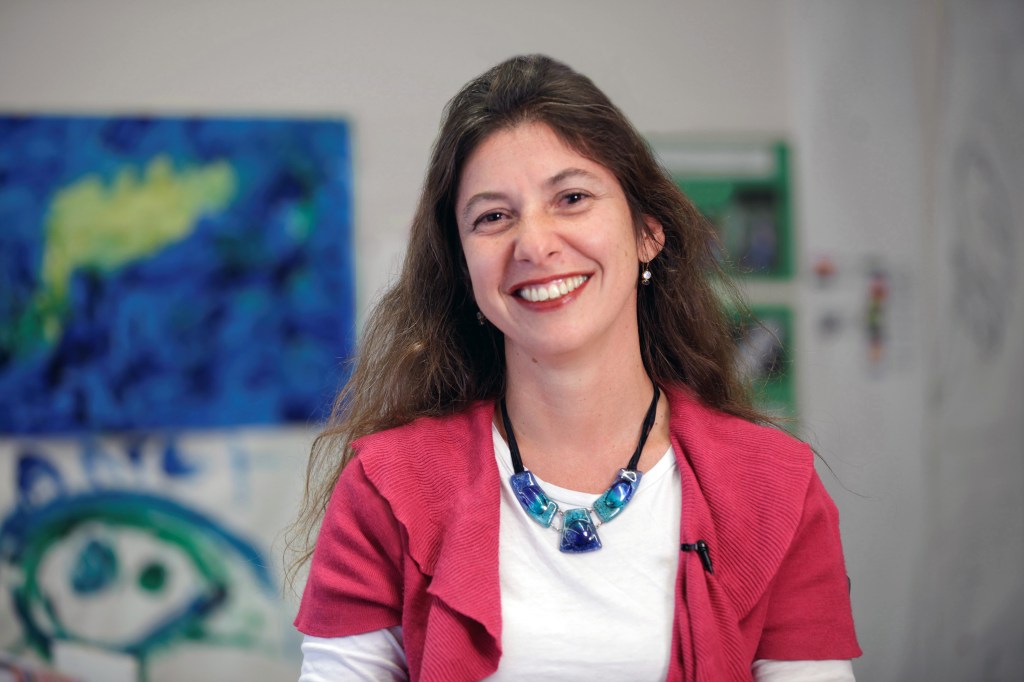Marina Umaschi Bers, SM ’97, PhD ’01, was working as a journalist in her native Argentina in 1992 when an assignment put her in touch with MIT mathematician and computer scientist Seymour Papert—the co-creator of Logo, a programming language for kids that was the basis of a camp she’d attended at age 10. During that conversation, she says, she found her calling: “I don’t want to write about this. I want to do this.” Shortly afterward, she enrolled at MIT as a graduate student to work with Papert.

Now at Tufts University, Bers leads the DevTech Research Group, examining the role new technologies can play in children’s development and learning. She also chairs the Department of Child Study and Human Development and directs the graduate certificate program in early childhood technology. Her work aims to help young children build STEM and arts skills, while developing values that can help people live together in a multicultural, diverse society.
“Technology may change the way we address some of those issues,” she says, “because it involves problem-solving, an open mind, trial and error.”
Her Tufts research group has co-developed a programming language called ScratchJr in partnership with teams led by former students of Papert: the MIT Media Lab’s Lifelong Kindergarten group, directed by LEGO Papert Professor of Learning Research Mitchel Resnick, SM ’88, PhD ’92, and the Playful Invention Company, cofounded by Brian Silverman ’78. Based on the coding language Scratch, ScratchJr is designed to encourage kids ages five through seven to program interactive stories and games. Some 13 million people worldwide have used the free ScratchJr app since it launched in 2014.
Through her startup KinderLab Robotics, Bers is commercializing another of her inventions: Kibo, a robot already in use by schools in 60 countries. Children cue up a set of actions for Kibo by scanning bar codes on wooden blocks. When they press a button, the robot enacts their program, performing a dance or telling a story. Kibo, which emphasizes concepts such as sequencing that are relevant to coding, also supports learning in math, reading, and writing. Through Kibo’s open-ended activities, says Bers, students learn not only how to engage with the technology but how they can use it to interact positively with other people. “I’m not focused on developing the next generation of programmers,” she explains. “I just want to impact the next generation of citizens—and they need to learn new skills and think in new ways.”
Keep Reading
Most Popular
Large language models can do jaw-dropping things. But nobody knows exactly why.
And that's a problem. Figuring it out is one of the biggest scientific puzzles of our time and a crucial step towards controlling more powerful future models.
How scientists traced a mysterious covid case back to six toilets
When wastewater surveillance turns into a hunt for a single infected individual, the ethics get tricky.
The problem with plug-in hybrids? Their drivers.
Plug-in hybrids are often sold as a transition to EVs, but new data from Europe shows we’re still underestimating the emissions they produce.
Google DeepMind’s new generative model makes Super Mario–like games from scratch
Genie learns how to control games by watching hours and hours of video. It could help train next-gen robots too.
Stay connected
Get the latest updates from
MIT Technology Review
Discover special offers, top stories, upcoming events, and more.